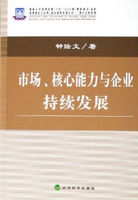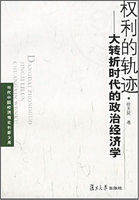77.Goh S.Managing effective knowledge transfer:an integrative frame‐work and some practive implication [J].Journal of Knowledge Man‐agement,2002,6(1):23‐30.
78.Granovetter M.Economic action and social structure:the problem ofembeddedness [J].American Journal of Sociology,1985,91:481‐510.
79.Grant R.Towards a knowledge‐based theory of the firm [J].Strate‐gic Management Journal,1996,17:109‐122.
80.Grant R.Contemporary strategy analysis:concepts,techniques,ap‐plications [M].Blackwell Publishing Ltd,2002.
81.Gupta A,Govindarajan V.Knowledge flows within multinationalcorporations [J].Strategic Management Journal,2000,21:473‐496.
82.Hage J,Aiken M.Program change and organizational properties:acomparative analysis [J].American Journal of Sociology,1967,72:503‐519.
83.Hansen M.The search‐transfer problem:the role of weak ties insharing knowledge across organization subunits [J].AdministrativeScience Quarterly,1999,44(1):82‐101.
84.Harris S.Organizational culture and individual sensemaking:a sche‐ma‐based perspective [J].Organization Science,1994,5(3):309‐321.
85.Henderson R,Clark K.Architectural innovation:the reconfigurationof existing product technologies and the failure of established firms[J].Administrative Science Quarterly,1990,35(1):9.
86.Hiil E,Brennan J.A methodology for identifying the drivers of in‐dustrial clusters:the foundation of regional competitive advantage[J].Economic Development Quarterly,2000,14(1):65‐69.
87.Hudson R.The learning economy,the learning firm and the learningregion:a sympathetic critique of the limits to learning [J].EuropeanUrban and Regional Studies,1999,6:59‐72.
88.Jaffe A.Trajtenberg M,Henderson R.Geographic localization ofknowledge spillovers as evidence from patent citations [J].QuarterlyJournals of Economics,1993,188:577‐598.
89.Jansen J,Van Den Bosch F,Volberda H.Managing potential and re‐alized absorptive capacity:how do organizational antecedents matter?[J].Academy of Management Journal,2006,48(6):999‐1015.
90.Judd C,Kenny D.Process analysis:estimating mediation in treat‐ment evaluations [J].Evaluation Review,1981,5(5):602‐619.
91.Kabanoff B,Brown S.Knowledge structures of prospectors,analyz‐ers,and defenders:content,structure,stability and performance[J].Strategic Management Journal,2008,29:149‐171.
92.Keeble D,Wilkinson F.Collective learning and knowledge develop‐ment in the evolution of regional clusters of high technology SMEs inEurope [J].Regional Studies,1999,33(4):295‐303.
93.Kim L.Imitation to innovation:the dynamic of a Korea"s technologi‐cal learning [M].Boston:Harvard Business School Press,1997.
94.Kim L.Crisis construction and organizational learning:capabilitybuilding in catching‐up at Hyundai motor [J].Organization Science,1998,9(4):506‐521.
95.King A,Zeithamal C.Measuring organizational knowledge:a concep‐tual and methodological framework [J].Strategic Management Jour‐nal,2003,24:763‐772.
96.Kishimoto C.Upgrading in the Taiwanese computer cluster:trans‐formation of its production and knowledge systems [Z].Institute ofDevelopment Studies,2003,memo.
97.Kogut B.Joint‐ventures:theoretical and empirical perspectives [J].Strategic Management Journal,1988,9 ∶ 312‐332.
98.Kogut B,Zander U.What firms do?coordination,identity,andlearning [J].Organization Science,1996,7(5):502‐518.
99.Krugman P.Geography and trade [M].Cambridge:MITPress,1991.
100.Lane P,Lubatkin M.Relative absorptive capacity and interorganiza‐tional learning [J].Strategic Management Journal,1998,19:461‐477.
101.Langlois R,Robertson P.Networks and innovation in a modularsystem:lessons from the microcomputer and stereo component in‐dustries.Research Policy(21):297‐313.
102.Lawson C,Lorenz E.Collective learning,tacit knowledge and re‐gional innovative capacity [J].Regional Studies,1999,33(4):305‐317.
103.Lee D.China"s strategy gives it the edge in the battle of two sockcapitals [N].Los Angeles Times,2005,April 10.
104.Leonard D,Sensiper S.The role of tacit knowledge in group innova‐tion [J].California Management Review,1998,40(3):112‐132.105.Levinthal D,March J.The myopia of learning [J].Strategic Man‐agement Journal,1993,14:95‐112.
106.Liao J,Welsch H,Stoica M.Organizational absorptive capacity andresponsiveness:an empirical investigation of growth‐oriented SMEs[J].Entrepreneurship Theory and Practice,2003,(Fall):63‐86.
107.Lissoni F.Knowledge codification and the geography of innovation:the case of brescia mechanical cluster [J].Research Policy,2001,30:1479‐1500.
108.Lublinski A.Does geographic proximity matter?evidence from clus‐tered and non‐clustered aeronautic firms in Germany [J].RegionalStudies,2003,37(5):453‐467.
109.Lyles M,Salk J.Knowledge acquisition from foreign parents in in‐ternational joint ventures:an empirical examination in the Hungar‐ian context [J].Journal of International Business Studies,1996,27(5):877‐903.
110.Malipiero A,Munari F,Sobrero M.Focal firms as technologicalgatekeepers within industrial districts:knowledge creation and dis‐semination in the Italian packaging machinery industry,[N].DRU‐ID Working Paper,2005.
111.Malmberg A.Beyond the cluster:local milieus and global economicconnections [A].Peck J,Yeung H.Remaking the global economy[C].London:SAGE Publications,2003:145‐159.
112.Malmberg A,Solvell O,Zander I.Spatial clustering,local accumu‐lation of knowledge and firm competitiveness [J].Human Geogra‐phy,1996,78(2):85‐97
113.Martin R,Sunley P.Deconstructing clusters:chaotic concept orpolicy panacea?[J].Journal of Economic Geography,2003,(3):5‐35.















